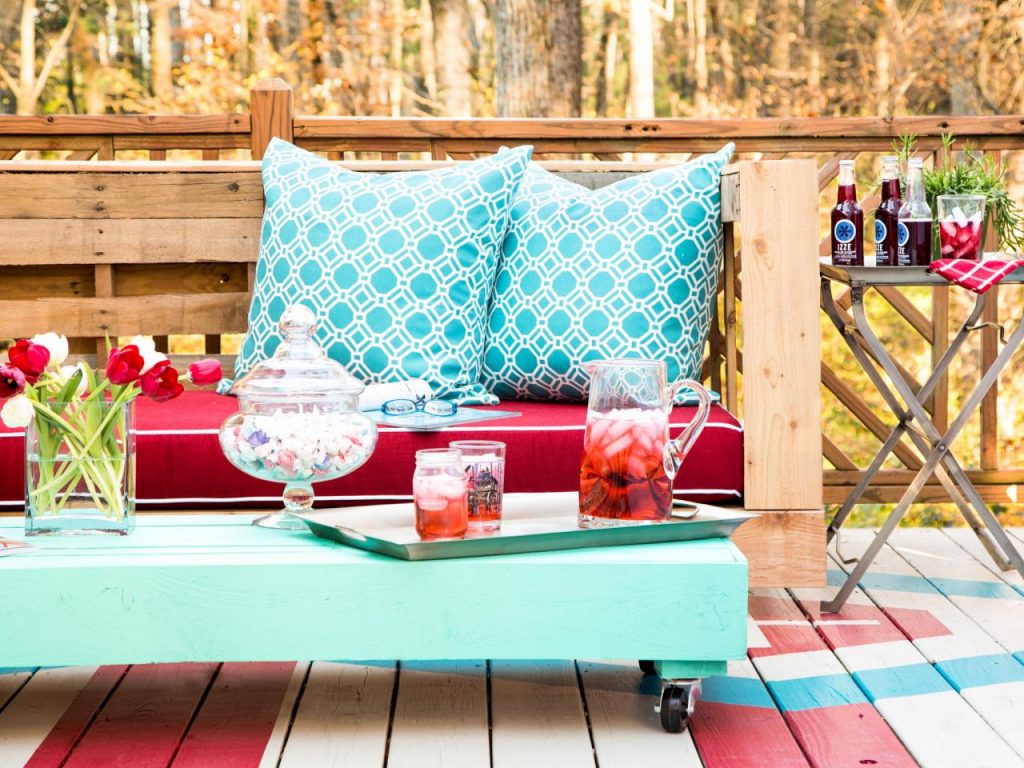Topflavendel. Wie pflegt man eine Lavendelpflanze?
Lavendel ist eine außergewöhnlich schöne Pflanze mit vielen nützlichen Eigenschaften. Es kann in vielen Gärten gefunden werden, erstaunlich mit seiner intensiven Farbe. Lavendel ist seit vielen Jahren nicht nur für seine schöne Farbe, sondern auch starken Duft geschätzt. Er ist auch einfach zu züchten und nicht zu problematisch. Wie sich herausstellt, müssen Sie nicht unbedingt einen Garten besitzen, um von dieser Pflanze zu profitieren. Wenn Ihr Platz begrenzt ist, ist Lavendel in Töpfen eine perfekte Lösung für Sie. Sie fragen sich, wie Sie ihn pflegen sollen? Wir kennen Tricks, die Ihren Lavendel zu einer wirklich atemberaubenden Dekoration machen werden.
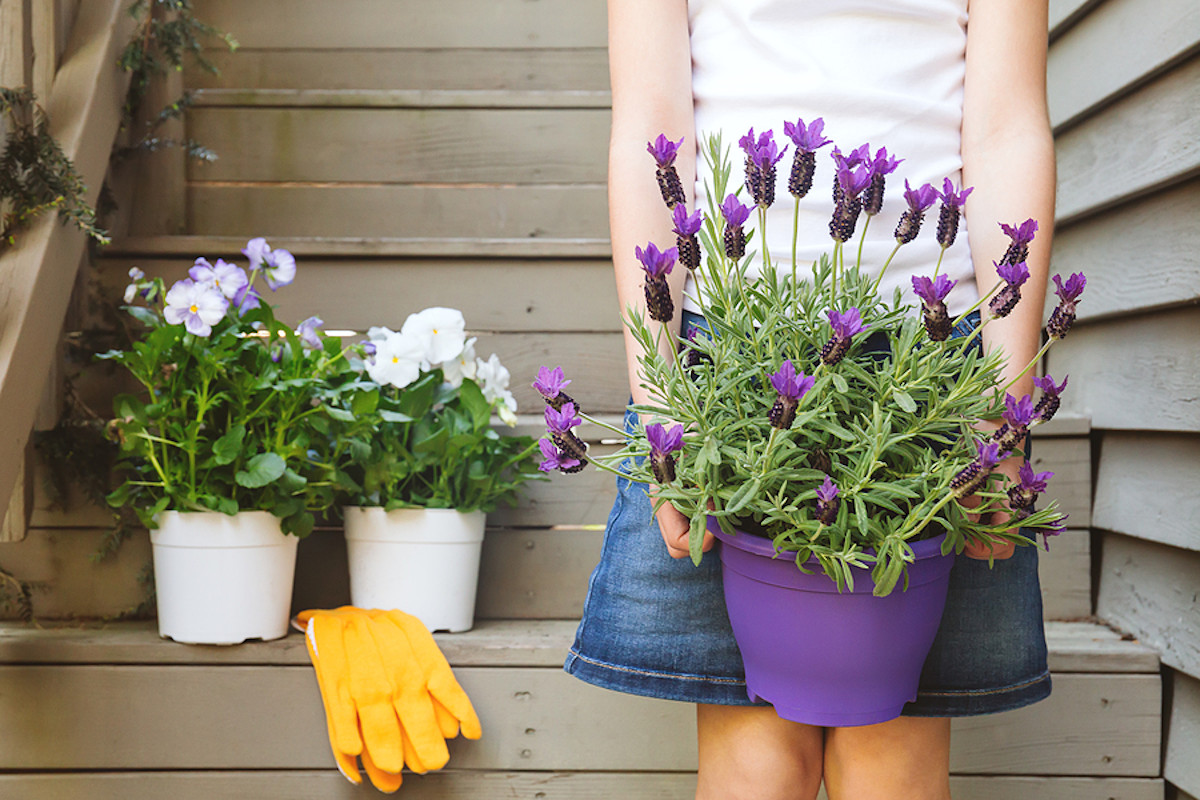
Was sind die Merkmale des Lavendels?
Lavendel ist ein Strauch, der zu den Lamiaceae, der Familie der Minzegewächse, gehört. Er ist sowohl Zier- als auch Kulturpflanze. Lavendel wird typischerweise einen halben Meter hoch, es gibt jedoch auch höhere Arten. Sein charakteristisches Merkmal sind violette, manchmal blaue Blüten, die vertikal wachsen. Sie verströmen einen leicht kampferähnlichen Duft. Lavendel wird wegen seiner gesundheitlichen Vorteile geschätzt. Die Pflanze wird auch in der Parfümindustrie und für kulinarische Zwecke verwendet.
Die wertvollen Teile sind Blüten, meist in getrockneter Form. Sie werden auch zur Herstellung von ätherischen Ölen verwendet. Er hat antiseptische Zwecke.
Lavendel hat viele andere Zwecke, die von jeder Frau geschätzt werden könnten. Im Zeitalter der Naturkosmetik wird Lavendel immer mehr geschätzt. Er hemmt die Talgproduktion der Haut, daher ist er perfekt für fettige und Mischhaut geeignet. Er ist eine große Hilfe bei Akne und Pickeln, sowie bei Hautverfärbungen.
Wenn Sie Lavendel in Ihrem Garten oder in Töpfen auf dem Balkon anbauen, können Sie Ihre eigenen Hautprodukte herstellen.

Lavendel hat eine beruhigende Wirkung auf das menschliche Nervensystem. Er ist auch ein gutes Stimulans bei geistiger Ermüdung. Als Kräutertee getrunken oder zu verschiedenen Gerichten hinzugefügt, regt Lavendel die Verdauung an und entspannt die Muskeln. Er wirkt auch schmerzlindernd.
In Anbetracht dieser Eigenschaften sowie seiner schönen Form lohnt es sich, Lavendel bei sich zu Hause zu haben. Sie können ihn in Ihrem Garten, auf dem Balkon oder in der Küche anbauen. Lavendel in einem Topf ist nicht allzu schwierig anzubauen. Sie müssen sich nur ein paar Grundsätze merken, damit Ihre Pflanze gesund und schön aussieht.
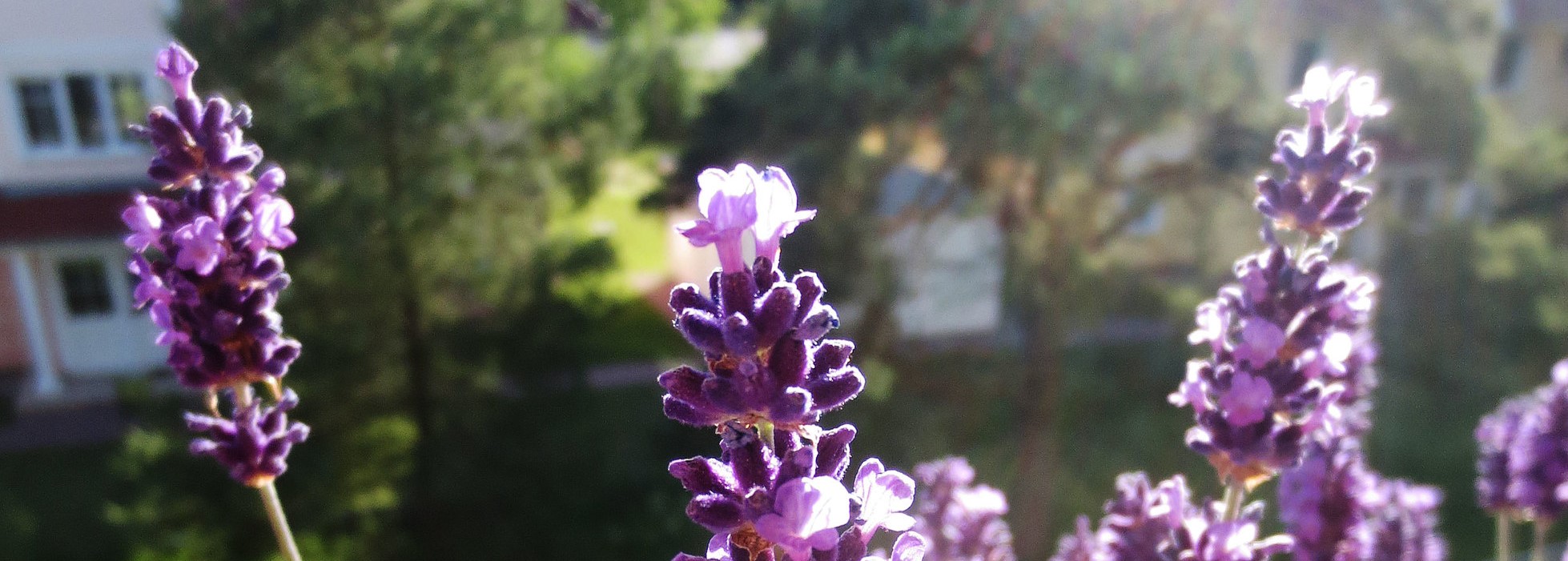
Lavendel im Topf - was sollten Sie darüber wissen?
Lavendel im Topf ist perfekt für jeden, der diese Pflanze auf seinem Balkon genießen möchte. Sie können entscheiden, ob Sie einen Setzling kaufen oder selbst säen wollen. Letztere Methode erfordert wesentlich mehr Aufmerksamkeit, da die Samen einer Schichtung unterzogen werden müssen. Es handelt sich um nichts anderes, als die Samen zu kühlen, was etwa drei Wochen dauern sollte.
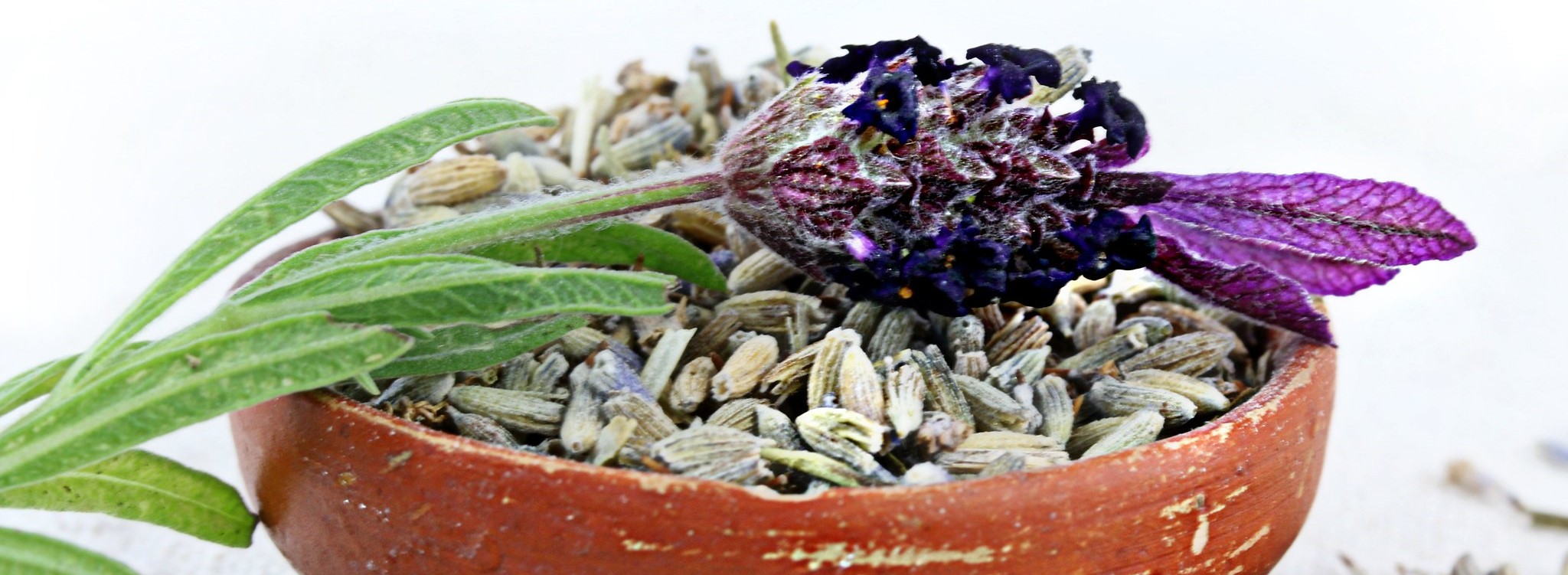
Die beste Zeit für die Schichtung von Lavendelsamen ist Februar. Wie macht man das? Bereiten Sie einen kleinen Behälter vor und füllen Sie ihn mit Erde. Pflanzen Sie die Samen und stellen Sie den Behälter in einen Raum, in dem die Temperatur um 0°C (32 F) bleibt - zum Beispiel in einen Keller. Sie können die Lavendelsamen auch im Kühlschrank kühlen - das ist definitiv eine bequemere Methode. Auf diese Weise müssen Sie sich keine Sorgen über Bodenfröste machen.
Eine Lavendelpflanze zu Hause zu züchten, ist keine sehr schwierige Aufgabe. Die Pflanze braucht nicht allzu viel Aufmerksamkeit. Gut gepflanzt wird Lavendel viele Jahre lang als Dekoration dienen. Es gibt viele Lavendelarten, und die meisten von ihnen können eingetopft werden. Pflanzen, die nicht frostresistent sind, eignen sich perfekt für diesen Zweck.

Wachsender Lavendel zu Hause - Arten
Eine der verbreitetsten Lavendelarten ist der englische Lavendel. Er ist sehr widerstandsfähig gegen niedrige Temperaturen und Frost. Die meisten Lavendelpflanzen eignen sich zum Wachsen in einem Topf, insbesondere solche, die bei niedrigen Temperaturen nicht überleben. Denken Sie bei der Auswahl einer Pflanze daran, dass verschiedene Arten unterschiedliche Höhen erreichen. Es gibt etwa 30 verschiedene Lavendelarten.
Die beliebtesten Arten sind:
- Englischer Lavendel - auch bekannt als echter Lavendel. Er ist frostbeständig, daher kann er schwierige Bedingungen in kalten Klimazonen überstehen. Er kann bis zu 1 Meter hoch werden. Die Blüten des englischen Lavendels haben verschiedene Farben - von weiß bis dunkelviolett.
- Französischer Lavendel - die Art ist weniger resistent gegen niedrige Temperaturen. Er kann bis zu -7 Grad Celsius überleben, daher ist er in kalten Regionen eine einjährige Pflanze. Die Blüten des französischen Lavendels sind beeindruckender als die des englischen Lavendels. Die Blütenblätter der Blüten ragen heraus und ähneln Schmetterlingsflügeln. Wegen des hohen Anteils an Ölen wird die Pflanze nicht zum Kochen verwendet.
- Spanischer Lavendel - auch bekannt als eine andere Art des französischen Lavendels. Die Blüten sind weiß, violett oder blau. Die Pflanze ist nicht essbar. Da sie anfällig für niedrige Temperaturen ist, wird sie in kalten Regionen in Töpfen angebaut.
- Breitblättriger Lavendel - ähnlich wie der englische Lavendel kann diese Art sehr niedrige Temperaturen überleben. Er hat einen stärkeren Duft, seine Blüten werden zur Herstellung eines starken ätherischen Öls verwendet.
- Lavendel x intermedia - es ist eine Hybride zwischen englischem Lavendel und breitblättrigem Lavendel. Seine Blätter haben eine schöne silber-grüne Farbe. Die Blüten sind violett. Die Pflanze kann bis zu 60 cm hoch werden.
Lavendel blüht zwischen Juni und September. Die Blütezeiten können variieren - es hängt von verschiedenen Faktoren ab. Die meisten Arten haben immergrüne Blätter.

Wie pflanzt man einen Lavendel in einen Topf?
Unabhängig von der Art Ihrer Pflanze haben alle Arten ähnliche Anforderungen. Topflavendel braucht mehr Aufmerksamkeit als der direkt in der Erde wachsende Lavendel, da er weniger Platz zum Wachsen hat.
Die Lavendelpflanze sollte in einem großen Topf wachsen. Es ist ratsam, Keramiktöpfe zu verwenden, da sie eine natürliche Verdunstung des Wassers ermöglichen. Bei Plastikbehältern besteht die Gefahr, dass Wasser im Inneren bleibt. Achten Sie darauf, am Boden des Pflanzgefäßes eine Drainageschicht und Abflusslöcher anzubringen. Lavendel verträgt keine übermäßige Nässe. Die beste Erde für eine Lavendelpflanze ist trocken, leicht, reich an Kalzium und alkalisch oder neutral. Sie können universelle Blumenerde im Verhältnis 1:1 mit Sand gemischt verwenden oder im Blumenladen eine spezielle Lavendererde kaufen. Nach dem Pflanzen einer neuen Pflanze bedecken Sie deren Wurzeln mit einer zusätzlichen Erdschicht.
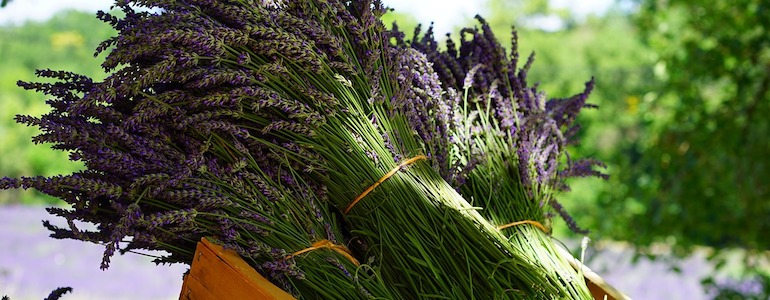
Lavendel im Topf wächst am besten an sonnigen Plätzen - wählen Sie Fenster nach Süden und Westen. Die Pflanze mag Wind, machen Sie sich also keine Sorgen, wenn der Platz zugig ist. Im Sommer können Sie den Topf auf einen Balkon oder auf eine Terrasse stellen.
Sie können auch versuchen, die Pflanze zu säen. Die Samen müssen zuerst geschichtet werden (etwa zwei Monate lang). Dazu kann man sie mit Sand mischen, in den Kühlschrank stellen und im Frühling pflanzen. Die jungen Pflanzen blühen nach einem Jahr. Ihre Farbe kann sich von der der Mutterpflanze unterscheiden.
Leitfaden zur Pflege von Lavendelpflanzen
Lavendel ist eine Pflanze, die nicht gerne im Schatten steht. Übermäßige Nässe ist auch nicht gut für sie. Gießen Sie ihn 1-2 Mal pro Woche. Achten Sie darauf, den Lavendel nicht zu stark zu gießen, da er sonst aufhören könnte zu wachsen. Es ist besser, die Erde stattdessen ein wenig trocknen zu lassen - aber lassen Sie sie nicht vollständig trocknen. Düngen Sie den Boden von April bis Juli alle zwei Wochen. Dazu eignet sich am besten ein Flüssigdünger.
Lavendel muss beschnitten werden. Tun Sie dies etwa zweimal im Jahr, um das gute Aussehen der Pflanze zu erhalten. Ein solches Verfahren verlängert auch die Blütezeit. Während Sie bis zur Hälfte der Länge schneiden können, ist es am besten, 2/3 eines Zweiges zurückzuschneiden.
Lavendel muss auch überwintert werden. Bringen Sie zu diesem Zweck die Pflanze in einen Raum mit niedrigerer Temperatur. Vergessen Sie nicht, sie zu gießen, sonst stirbt die Pflanze ab. Lavendel ist unter Schädlingen nicht sehr beliebt - sein starker Geruch wirkt als natürliches Abwehrmittel. Wenn die Pflanze nicht mehr blüht, kann sie an eine neue Stelle umgepflanzt werden.
Die einzige Krankheit, die eine Lavendelpflanze befallen kann, ist die Botrytis (eine Pilzart). Sie tritt auf, wenn die Pflanze überwässert wird. Um dies zu verhindern, sollten die Wurzeln nicht zu stark durchfeuchtet werden. Gießen Sie das Wasser sofort aus der Untertasse aus, damit es nicht in den Boden zurückgesaugt wird.

Lavendel zu Hause - Beispiel Arrangements
Sie können einen Lavendel einzeln oder in Gruppen pflanzen - stellen Sie nur sicher, dass Ihr Behälter groß genug ist. Die Pflanze sieht sehr gut aus und ist daher selbst eine Dekoration. Sie können sie auch mit anderen Arten von Balkonpflanzen kombinieren. Wählen Sie Pflanzen mit ähnlichen Ansprüchen.
Arten, die mit Lavendel in einem Topf wachsen können, sind:
- Weisen,
- Kalender,
- Zeckenkörner,
- rosa.
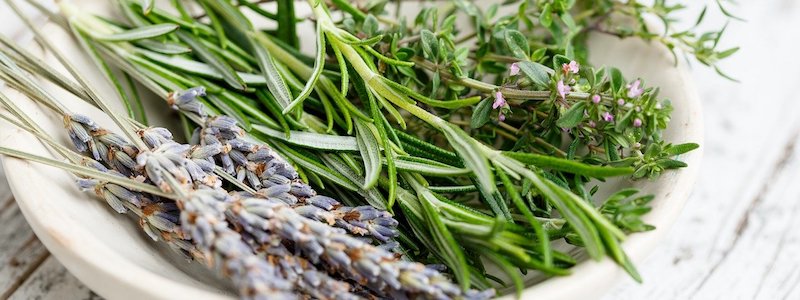
Lavendel sollte mit Blüten in zarten Farben kombiniert werden, die ihn nicht überwältigen. Eine gute Idee ist es, eine Komposition mit Herbes de Provence zu machen. Es ist ein perfektes Arrangement für die Küche - es kann sowohl als Dekoration als auch als Kräutergarten im Haus dienen.
Lavendel passt am besten zu rustikalen Inneneinrichtungen. Wählen Sie dafür interessante Gefäße - zum Beispiel bunte Keramiktöpfe. Sie können auch Metalleimer oder sogar eine alte Gießkanne verwenden.
Wie kann man Lavendel verwenden?
Lavendel hat viele Eigenschaften. Aus diesem Grund ist die Pflanze definitiv wertvoll. Es gibt viele Möglichkeiten, wie man Lavendelblüten verwenden kann. Siehe die unten aufgeführten:
- Insektenschutzmittel - Insekten, z.B. Stechmücken hassen den starken Lavendelduft. Sie können Trockenblumen in kleine Baumwoll- oder Leinensäckchen stecken und sie dort aufhängen, wo sie gebraucht werden, zum Beispiel im Schlafzimmer. Es ist auch ein gutes Mittel gegen Motten - legen Sie einfach eines der Päckchen irgendwo in Ihren Kleiderschrank.
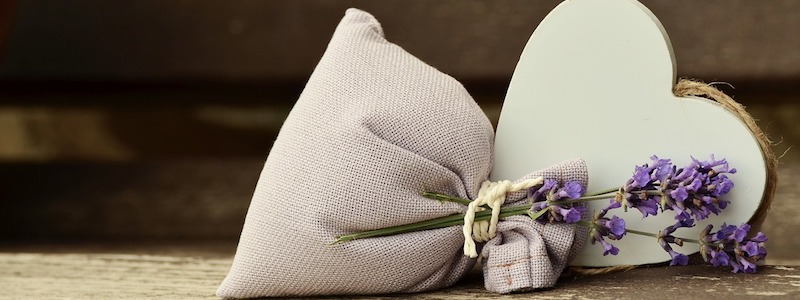
- Mittel gegen Kopfschmerzen - Lavendelaroma wirkt beruhigend und entspannend. Sie können einige frisch geschnittene Lavendelblüten in eine Vase in Ihrem Schlafzimmer stellen. Sie können auch ein Päckchen mit getrockneten Blumen unter Ihr Kopfkissen legen - das hilft Ihnen beim Einschlafen.
- Würzen - Lavendel ist manchmal in einer beliebten Würzmischung enthalten - Herbes de Provence. Sie können die Pflanze zum Würzen vieler Gerichte verwenden, insbesondere zum Würzen von Geflügel. Seien Sie jedoch vorsichtig - Lavendel hat ein starkes Aroma. Wenn Sie ihn zu oft verwenden, tötet er den Geschmack des ganzen Gerichts ab. Sie können Blumen auch zu Desserts und Eiscreme hinzufügen.
- Lavendelzucker - er ist sehr einfach zuzubereiten. Mischen Sie einfach etwas Zucker mit Lavendelblüten - frisch oder getrocknet - und legen Sie ihn für mehrere Wochen in einen luftdichten Behälter. Nach dieser Zeit wird der Zucker gesiebt, um ihn von den Blüten zu trennen. Er eignet sich perfekt für Kaffee, Tee, Kuchen und Kekse.
- Lavendeldekorationen - geschnittene und getrocknete Lavendelzweige sind tolle Dekorationselemente. Man kann sie zur Dekoration von Kerzen verwenden oder sie einfach bündeln und in eine Vase stellen.
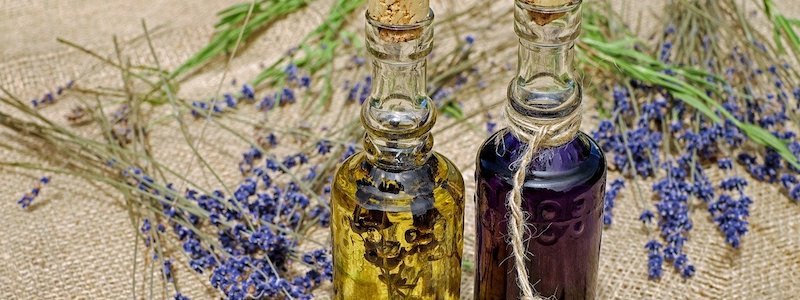
Das sind nur ein paar Verwendungsmöglichkeiten von Lavendel. Es gibt offensichtlich mehr Ideen - nutzen Sie einfach etwas Inspiration und Ihre eigene Kreativität. Lavendel ist eine bemerkenswerte Pflanze, die es definitiv wert ist, in Ihrem Garten oder an Ihrem Haus gehalten zu werden. Es gibt viele Arten mit unterschiedlichem Aussehen, aus denen Sie wählen können. Als Teil einer Balkondekoration braucht die Pflanze nur ein wenig Aufmerksamkeit, was im Vergleich zu der Menge der Vorteile, die sie bietet, nicht viel ist. Lavendel in einem Topf ist eine großartige Idee für die Dekoration jeder Inneneinrichtung.
📍 Wie baut man Lavendel an?
Vielleicht bauen Sie Lavendel in Ihrem Garten oder, falls Sie keinen besitzen, in einem Container an. Lavendel ist nicht schwer zu züchten, obwohl die Pflanze in einem Topf mehr Aufmerksamkeit erfordert.
📍 Wie trocknet man Lavendel?
Schneiden Sie mehrere Zweige ab und binden Sie sie mit einem Zweigstück zu einem Bündel zusammen. Hängen Sie es an einem trockenen und warmen Ort auf.
📍 Wann blüht der Lavendel?
Lavendel blüht zwischen Juni und Ende September. Die Zeit kann je nach Wetterbedingungen unterschiedlich sein.
📍 Wann soll Lavendel gepflanzt werden?
Sie können die ganze Saison über Lavendel pflanzen, von Anfang April bis Ende September. Sie können Lavendel umpflanzen, nachdem die Blüten nicht mehr blühen, im frühen Frühjahr oder frühen Herbst.
Empfohlene Artikel




